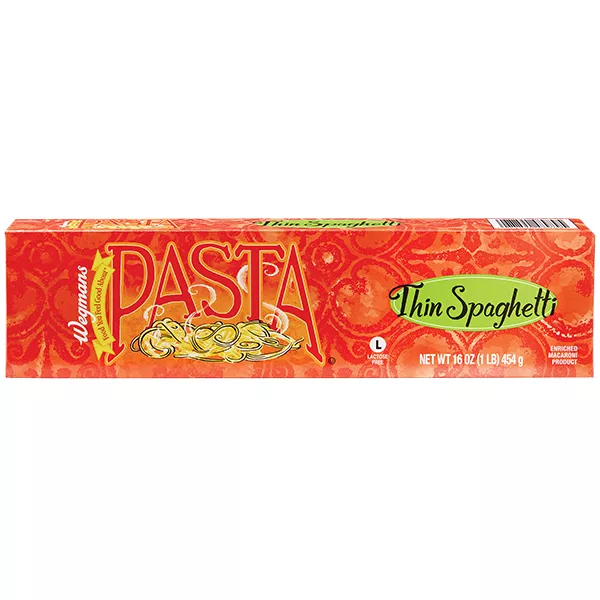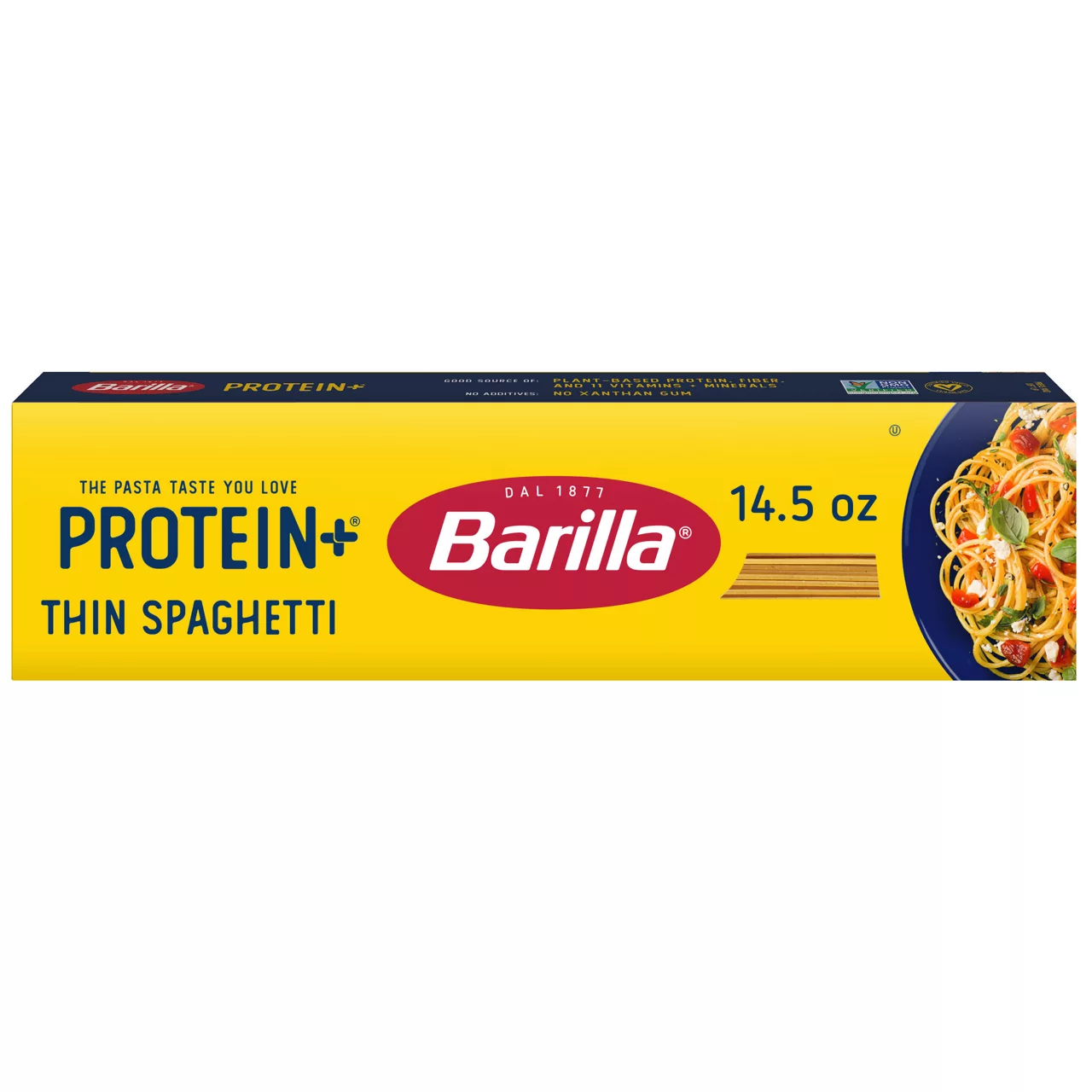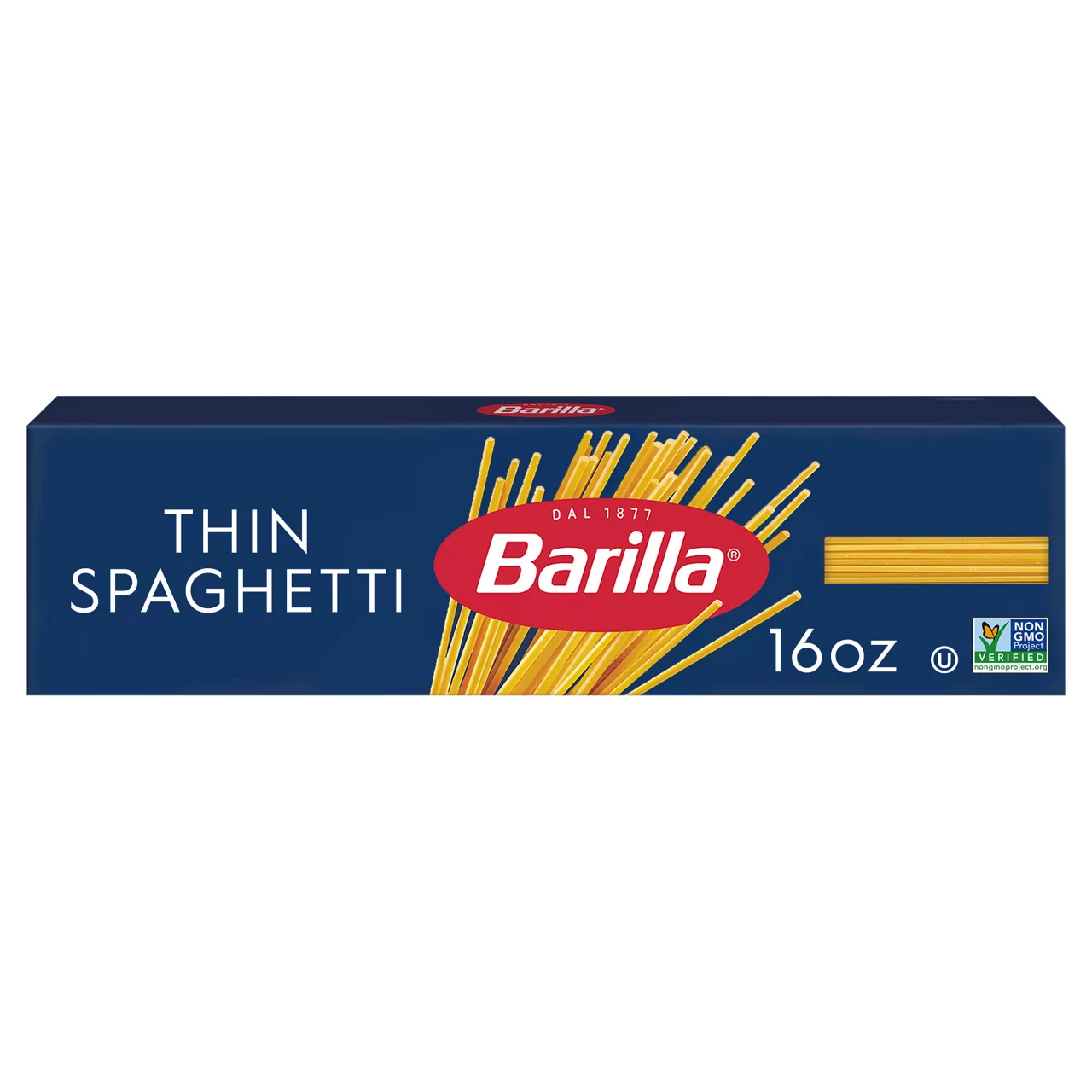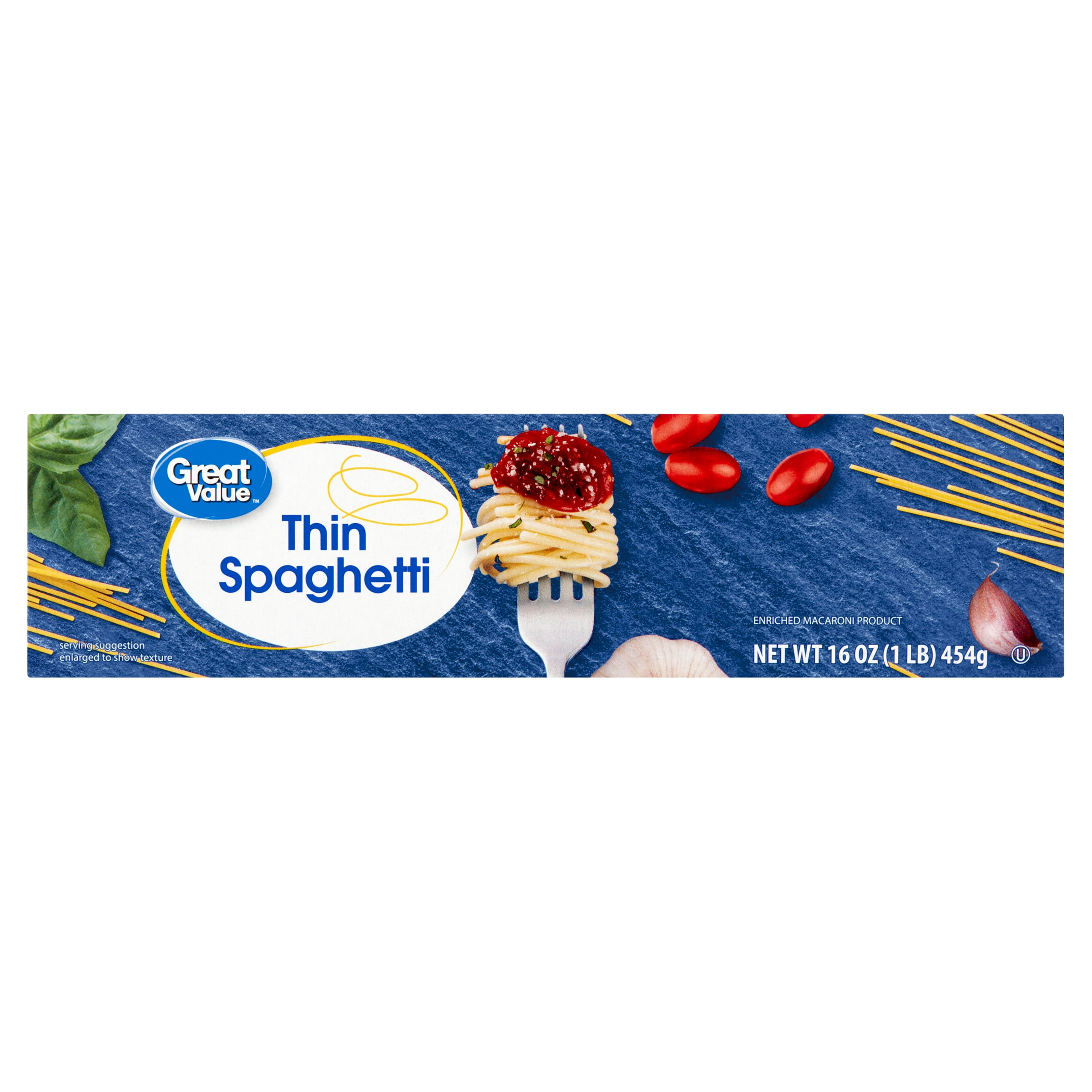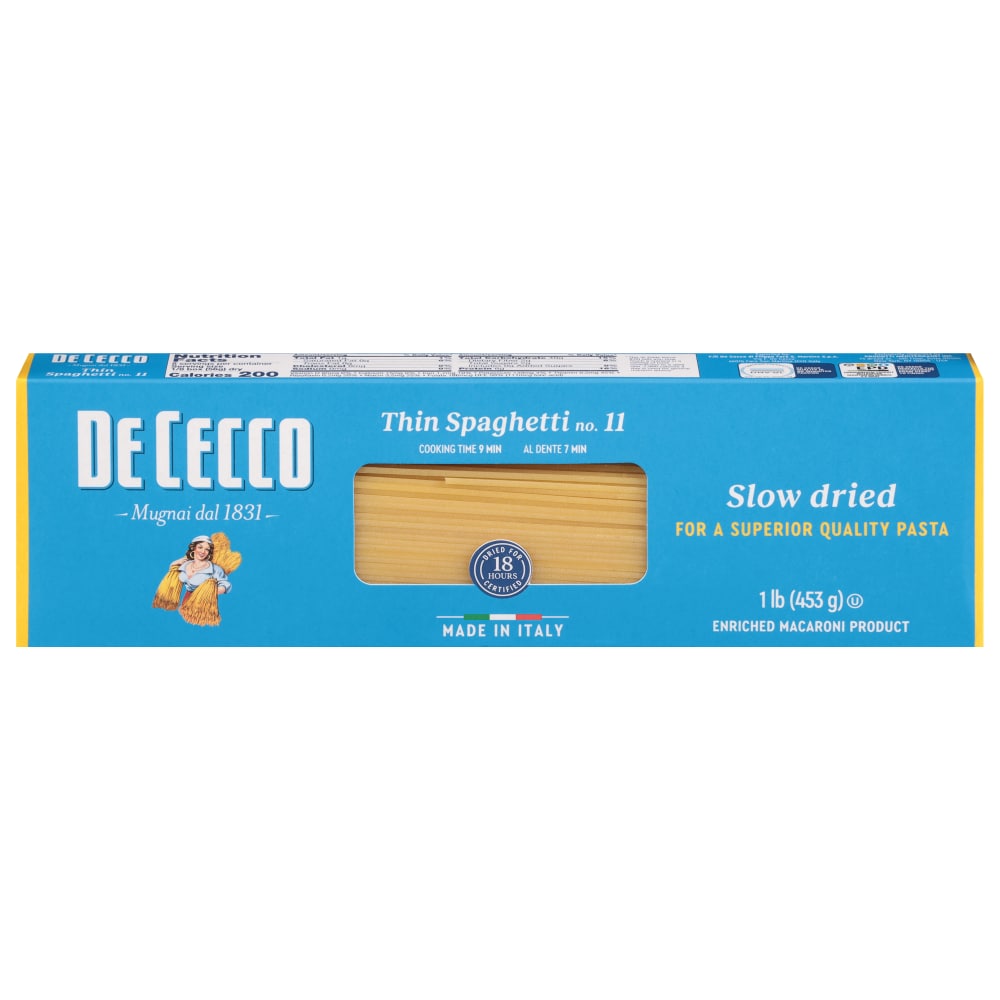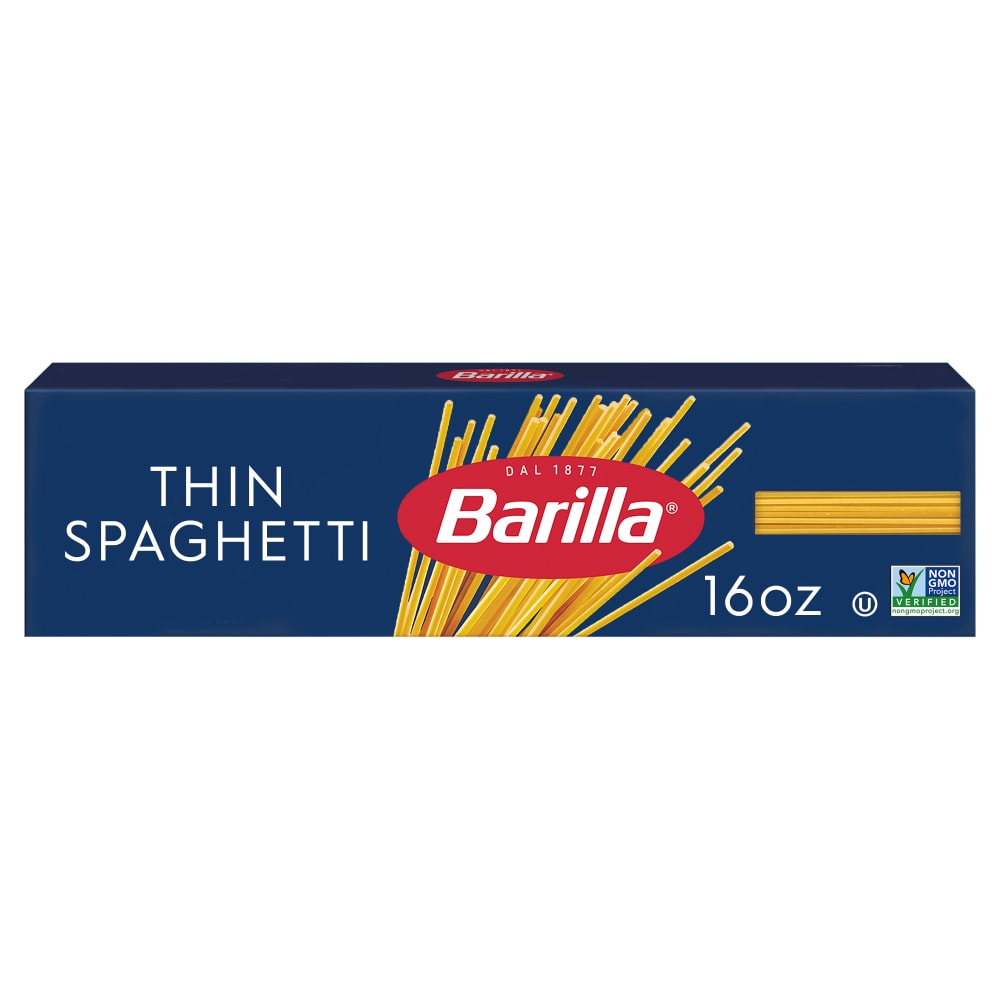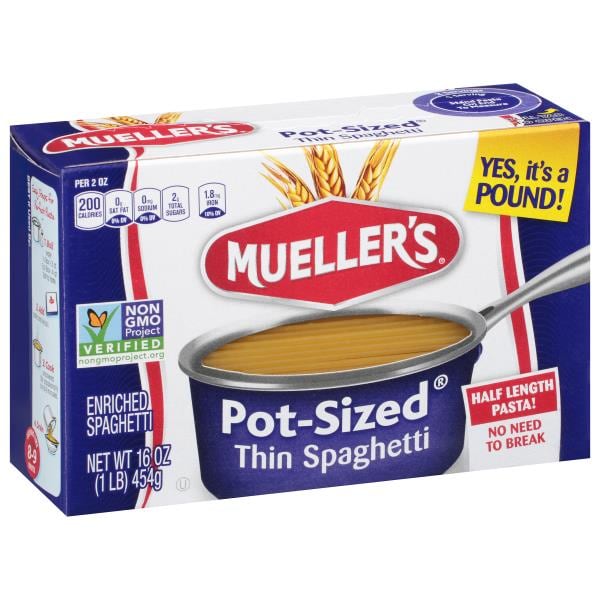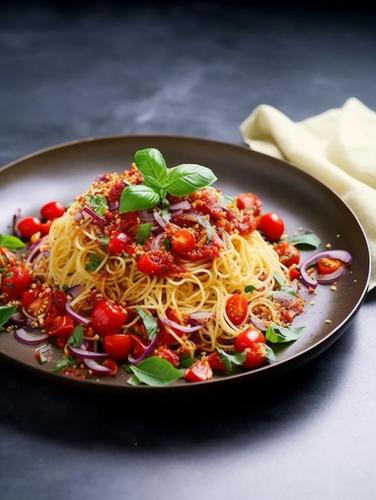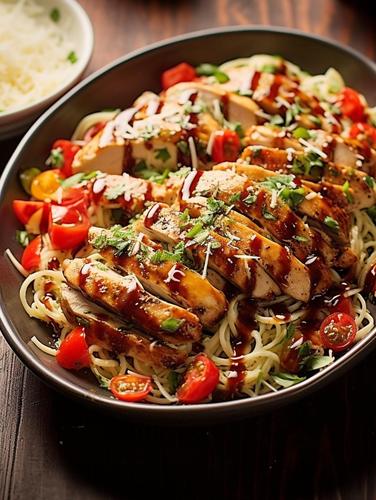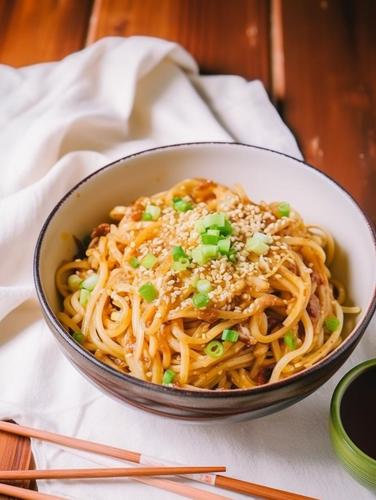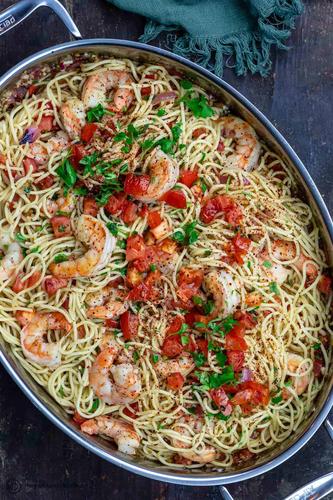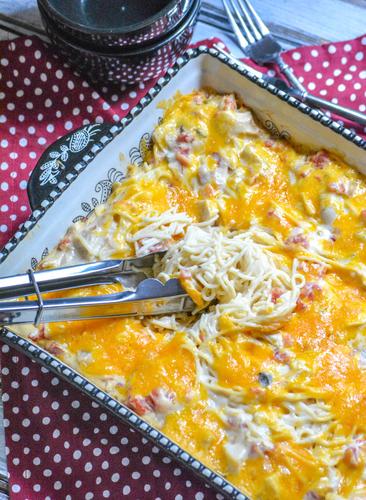MAIN DISHES
SALADS
SIDE DISHES
Thin Spaghetti
Thin spaghetti, also known as spaghettini or capellini, is a type of Italian pasta that resembles regular spaghetti but with a thinner diameter. Made from wheat flour and water, it is a highly versatile and popular choice amongst pasta lovers. Its thin strands provide a delicate texture that pairs well with lighter sauces and ingredients, offering a different mouthfeel from its traditional spaghetti counterpart.
For home cooks and consumers, thin spaghetti can elevate a typical pasta dish into something more refined and elegant. It cooks quickly, usually taking about 3-5 minutes to become al dente. Thin spaghetti is perfect for dishes featuring light tomato or olive oil-based sauces, fresh seafood, or simple herbaceous flavors. Its delicate nature allows the flavors of the other ingredients to shine through, creating a delightful dining experience.
84%
CARBS
2%
FAT
14%
PROTEIN
497 Thin Spaghetti Products
Wegmans Enriched Macaroni Pasta Product, Thin Spaghetti
Barilla Protein+ Thin Spaghetti
Barilla Thin Spaghetti Pasta
Great Value Thin Spaghetti
De Cecco Thin Spaghetti, No. 11
Great Value Enriched Macaroni Product, Thin Spaghetti
Thin Spaghetti
Barilla Thin Spaghetti Pasta Quality Non-GMO and Kosher Certified Pasta
Mueller's Pot-Sized Thin Spaghetti
Kroger® Thin Spaghetti
Used In 10 Recipes
1
Bursting Bruschetta Pasta
4
Italian Chicken Bruschetta Pasta
2
Cheesy Rotisserie Chicken Tetrazzini
3
Golden Garlic Fusion Noodles
342
Shrimp Pasta Recipe, Mediterranean-Style
13
Spaghetti Casserole Recipe
21
Enchilada Chicken Spaghetti Skillet
2
Cheesy Mexican Chicken Spaghetti
Thin Spaghetti Is Frequently Used With
Thin Spaghetti FAQ
Thin spaghetti, otherwise known as spaghettini or capellini, provides an effortless way to put a twist on traditional spaghetti recipes due to its fine texture and quick cooking time. Most cooking errors occur due to overcooking, which can make the pasta mushy, or undercooking, resulting in hard, crunchy noodles. To prevent these problems, it's important to constantly taste test the pasta during cooking to make sure it's al dente, where it remains firm when bitten. Remembering that thin spaghetti will continue to cook a little after being drained because of the residual heat can also prevent overcooking.
To fully optimize the essence of thin spaghetti, pair it with lighter sauces or dressings. Heavier sauces can potentially make the thin strands clump together, overpowering their delicate nature. The use of quality ingredients is crucial as well, this pasta variety is perfect for allowing complex flavors to shine.
Remember to not rinse the pasta after cooking, unless a cold pasta dish is being prepared. The starch on the pasta helps the sauce adhere better. Finally, using a twirling method with a fork when eating thin spaghetti gives a better dining experience.
For special occasions, consider making a 'pasta nest' as a serving suggestion, where the spaghetti is twirled and arranged in a stylish 'nest' on the plate, adding a touch of elegance to any meal.
How long does thin spaghetti take to cook?
What's the difference between thin spaghetti and regular spaghetti?
What type of sauce is best for thin spaghetti?
Do I need to rinse thin spaghetti after cooking?
Can I use thin spaghetti for pasta salads?
Why is my thin spaghetti coming out mushy?
My thin spaghetti clumps together after cooking. How can I prevent this?
What's a good method for eating thin spaghetti?
How can I serve thin spaghetti in a more elegant way?
What are some good recipes for thin spaghetti?
Expiration & Storage Tips
When does thin spaghetti expire?
Unopened, store-bought thin spaghetti can last up to two years from the date of manufacture if stored in a cool, dry place. This is far beyond the printed expiry date on its package as it is often a 'best by' date rather than a 'use by' date. However, it's best to start checking for signs of spoilage after the printed date. Once opened, you should consume it within 1-2 months for best quality, although it may still be safe to consume even after this time, assuming you have stored it properly. Homemade thin spaghetti should be consumed within 2-3 days if stored in the fridge. When frozen, thin spaghetti can last up to a year.
How do you tell if thin spaghetti is bad?
Spoiled thin spaghetti is relatively easy to spot. Firstly, look for obvious signs such as a change in color or development of an off odor. Good pasta should be golden yellow or light beige, and it should not smell rancid or sour. Pay special attention to any fuzzy mold spores or any insects. Touch can help too, if pasta feels slimy or stickier than normal, it may be unsafe.
Tips for storing thin spaghetti to extend shelf life
• Always store thin spaghetti in an airtight container after it's been opened to ensure it doesn't absorb moisture from the air, as this can lead to spoilage
• Keep your spaghetti in a cool, dry place, away from direct sunlight and heat sources
• If you have cooked too much pasta, you can freeze it! Make sure it's well cooled, and then transfer into freeze-safe containers or bags. Just remember that pasta can become a little softer once thawed and reheated, so it's best not to overcook it before freezing
• For homemade pasta, you can add a touch of oil before storing it. This will prevent the noodles from sticking together
EXPIRES WITHIN
19 - 29
MONTHS
Substitutes

Vermicelli

Spaghetti

Angel Hair Pasta

Gluten Free Spaghetti
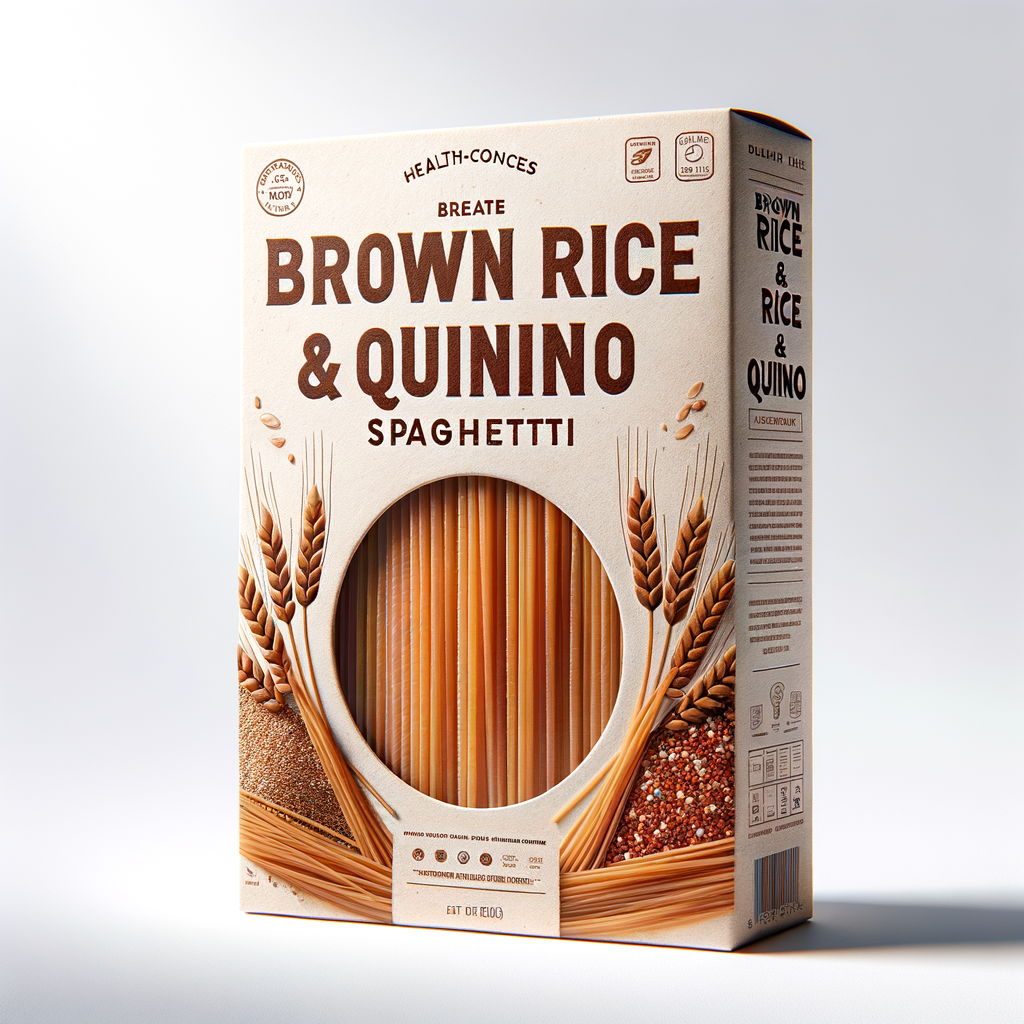
Rice & Quinoa Spaghetti
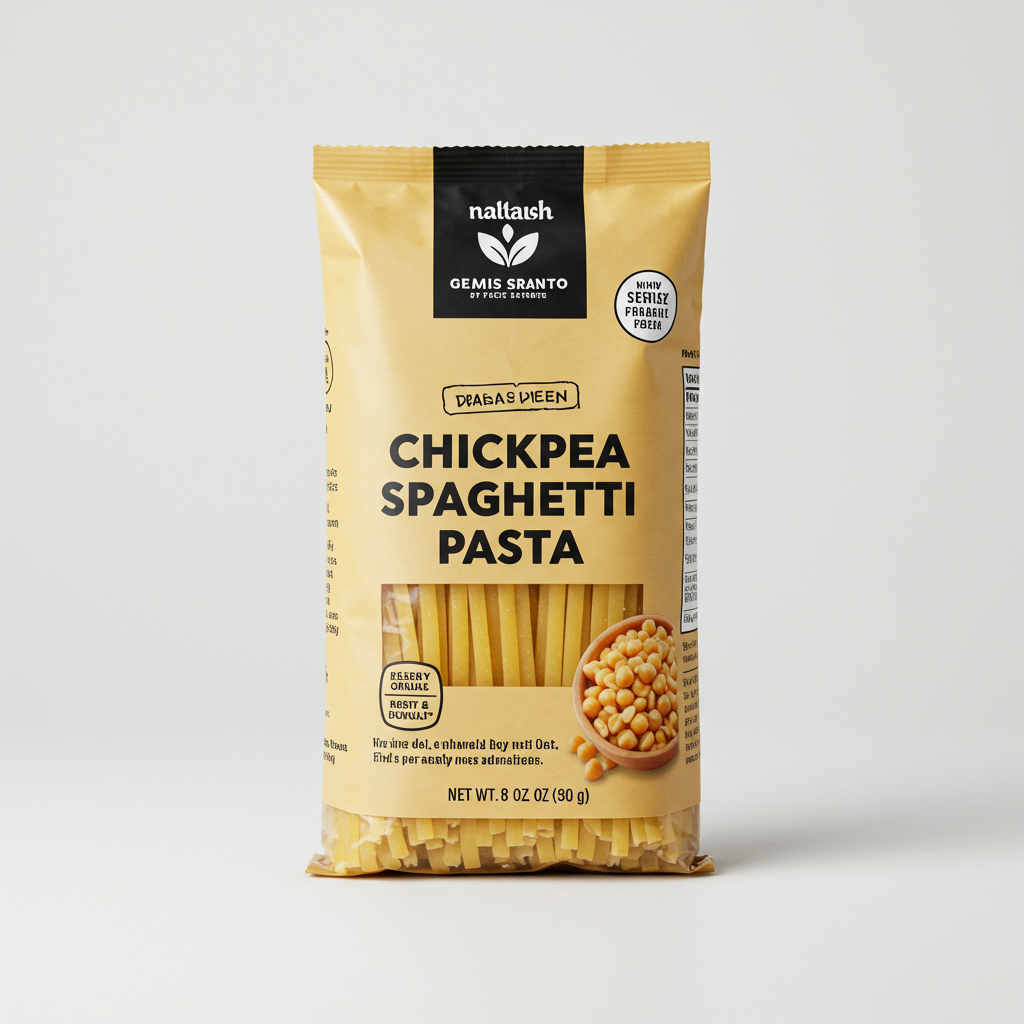
Chickpea Spaghetti

Lentil Spaghetti

Whole Grain Spaghetti
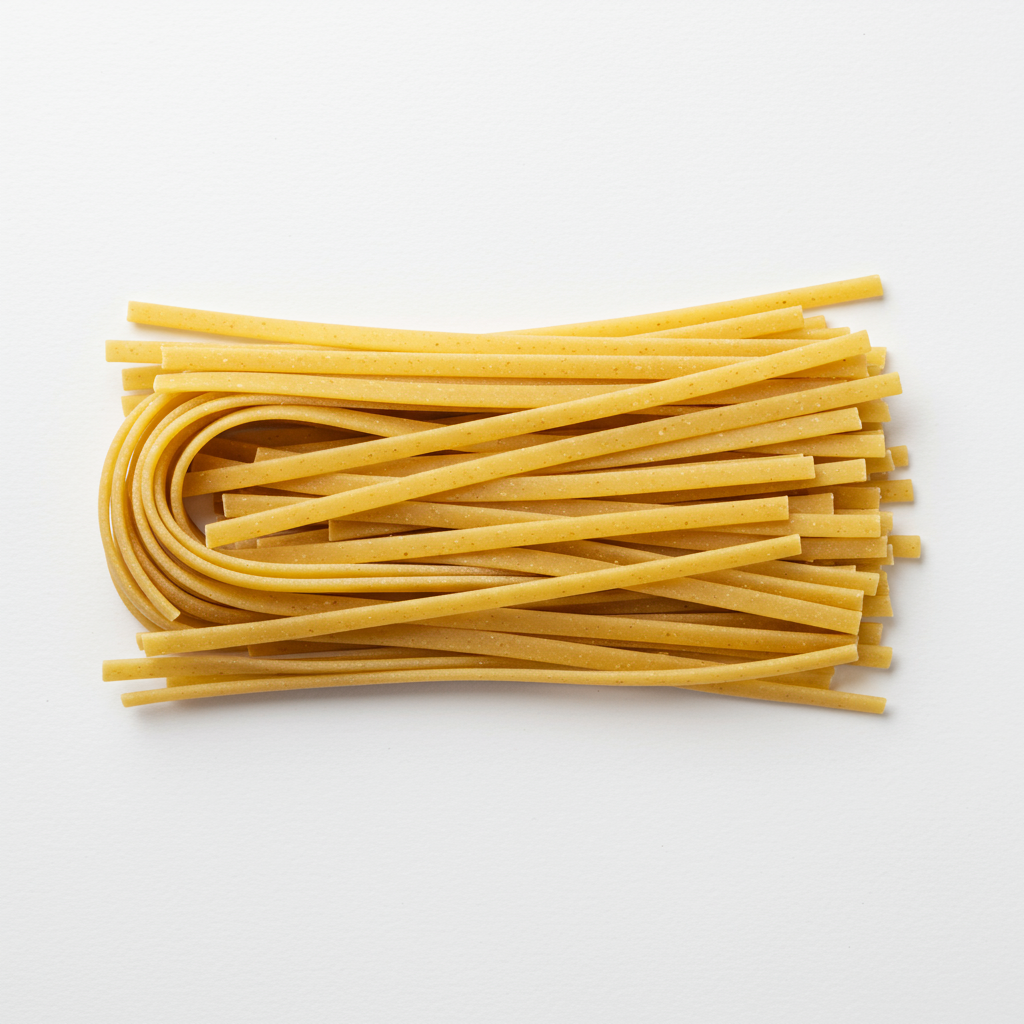
Chickpea Linguine Pasta
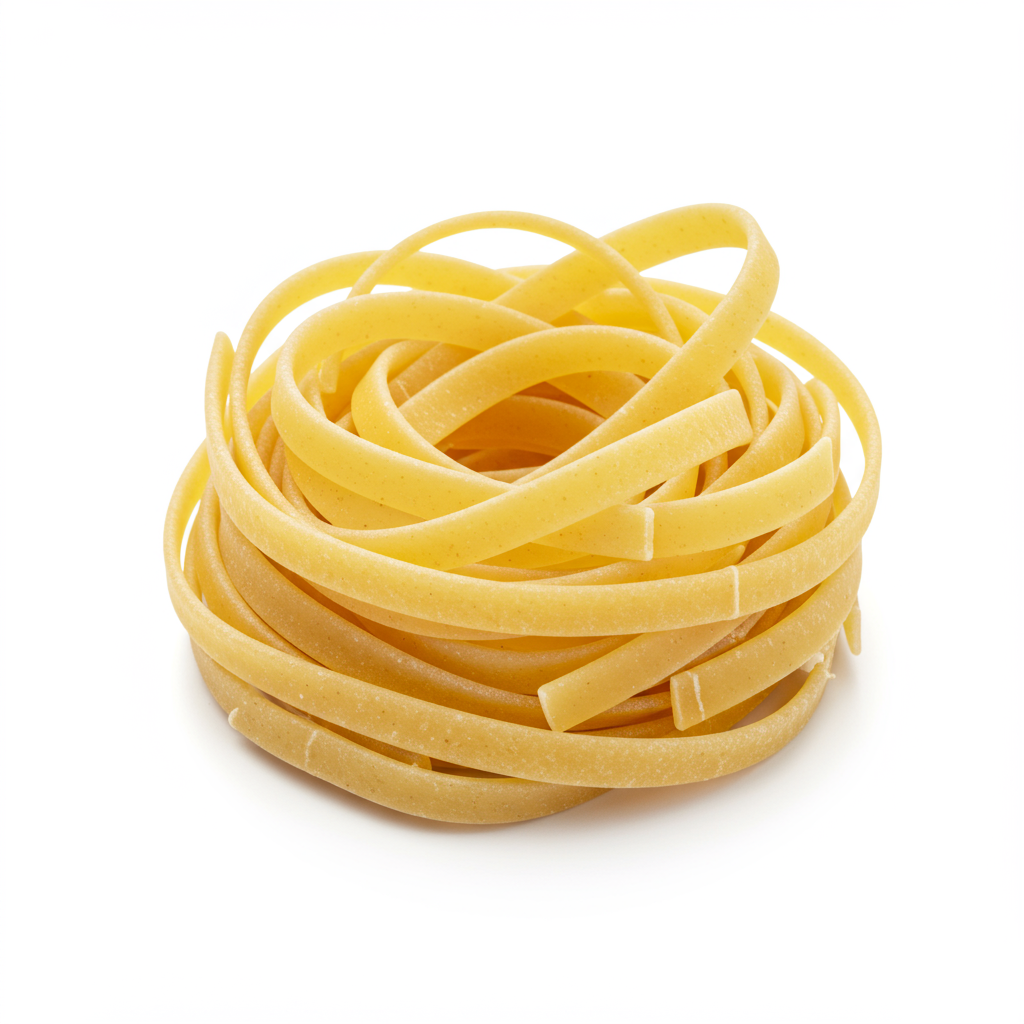
Gluten Free Fettuccine Pasta
See All
Health Info
Macros
40g
CARBS
1g
FAT
7g
PROTEIN
Allowed on these diets
LOW FAT
HIGH CALCIUM
VEGETARIAN
VEGAN
LACTOSE FREE
Contains these allergens
WHEAT

